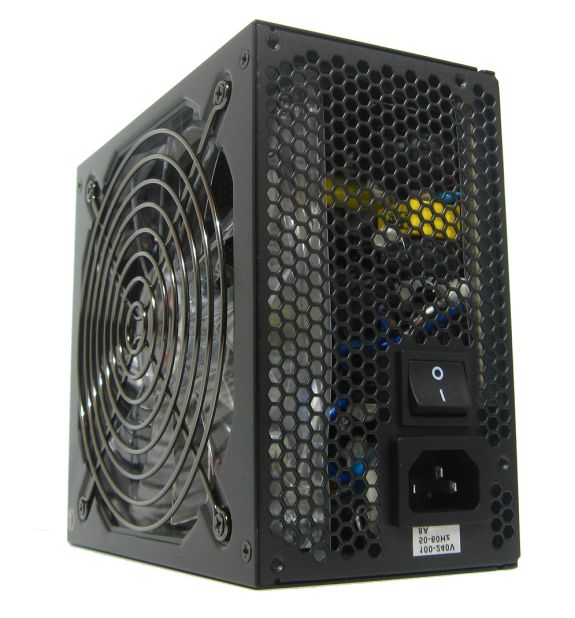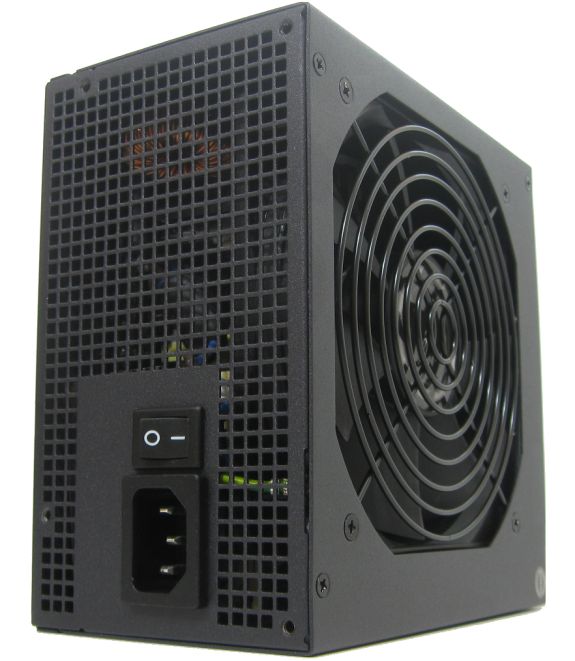550W Roundup: Three PSUs at Different Prices
by Martin Kaffei on October 28, 2010 4:00 PM ESTYou Get what You Pay for!
Perhaps our conclusion should also include the warning: caveat emptor (let the buyer beware), because it's clear that some PSUs should never see retail shelves. The Techsolo Black Mamba 550W belongs in this classification if you want a 550W PSU; in fact, the Techsolo is a ~250 watts power supply without an acurate working power factor correction—not to mention the fact that the efficiency is always below 75%.
If you just need a cheap power supply that will function at loads under 250W, perhaps budget products will fit the bill, but we'd suggest looking elsewhere as long-term power costs (and the risk of damaged components) makes this a gamble at best. In our case, the PSU died at 50% load, and there are no real safety functions—not even an MOV in the entrance. Both main switches are undersized and exploded. The protective ground wire is connected to a mounting screw of the main PCB. Again: Bad idea!
While the product looks decent, Techsolo offers nothing more than a few cables ties, one PCIe connector, and very short cables (40-45cm for the main cables). The cable sleeving is a nice extra, but we'd rather have the cost put elsewhere. Nothing else even suggests that this is a quality power supply. The noise for example is always over 22dBA and reached up to 28dBA at "50%" load. Another problem is the noisy PFC-choke, which is really loud and emits a high-pitched squeal. Passive PFC is always a noisemaker. In any case, Antec and OCZ are quieter and better, so just give this one a pass if you happen to be in Europe.

The OCZ Fatal1ty 550W is no superhero on the market, failing to stand out from the crowd. Your system won't run faster, and we have to wonder how much Fatal1ty gets paid for the use of his name—and if it even helps with increased sales, considering he's been quiet of late. This is a minor upgrade of the older OCZ ModXStream Pro 500W, with slightly improved internal devices, but that's about it. The EMI filtering has most necessary components, excluding an MOV. OCZ has switched to Teapo (LH, SC), after the Chinese caps weren't helpful for their public image. We can't say that they have the best characteristics, but they do a good job in power supplies. Now there are more protective foils against short circuits as well. This progress is absolutely welcome.
The downside of the PSU is that the ripple and noise results are very high for an "actual" product. More than 70mV on +12V and about 41mV on +5V can be measured. The efficieny is low at 10% load and not to remarkable at 50% load. Otherwise the voltage regulation is satisfying (never below -2% on all rails) and the power factor is high (above 0.840). The 45cm 24-pin cable should be long enough for small and mid-size cases, while the 4-pin and 4+4-pin ATX12V cables for the CPU could be much longer; we wouldn't recommend this PSU for use in cases where the PSU is at the bottom. Six SATA and HDD connectors are provided and there is a floppy connector at 90cm. The red cable sleeving is cheap but at least it's something.
What about the noise level? It's not bad at all. At low load there is no more than 18-19dBA. Even at full load the fan stays below 30dBA. Overall it is as quiet as the Antec TruePower New, but takes a small lead at high loads. This isn't a bad power supply, and it's reasonably efficient, but the high amount of ripple on the various rails is a concern for long-term stability, particularly if you're actually running this on a higher performance gaming system. Outside of noise levels the Antec is a far better PSU; you just have to decide if it's worth the additional cost.

When we look at the Antec TruePower New 550W, we can see good capacitors (Nippon Chemi-Con), many components for filtering in the entrance including an MOV, and well dimensioned +12V rails. The TruePower New has 55cm connectors for graphics cards and a 50cm 24-pin cable. The cable sleeving is again done rather cheaply, but the number of peripheral connectors gives no occasion for criticism. There is only one real problem: with a limited number of plugs you can't connect all the modular cables—even though this 550W unit should easily be able to handle such a configuration.
As for performance and quality, all the results from our tests are very impressive. The voltage is always over or near the ideal value and there is hardly any ripple and noise on any of the rails: less than 35mV on +12V, and less than 20mV on +3.3V and +5V. Up to 87% efficiency and a high power factor (above 0.850) is the primary reason for the cost; such results can only be reached with high quality devices, and those devices cost more than lesser offerings. In every case, Antec performs better than the OCZ and comes out the clear leader of this trio. And if you've ever wondered what the difference is between "budget" power supplies like the Techsolo and quality offerings like the Antec, hopefully we've managed to shed some light on the discussion.
So what's the overall conclusion? The gap between OCZ and Antec is far shorter than the gulf between OCZ and Techsolo, but you can definitely see why the Antec costs more. Long-term, the increased efficiency of the OCZ will easily pay for itself relative to a budget PSU, though we can't say the same for the Antec vs. OCZ. However, the Antec has much better characteristics elsewhere, and high ripple can put extra stress on your PC's components making the Antec a better choice for enthusiasts and anyone looking for maximum reliability. Is it worth the added cost? That's up to you, but we'd recommend spending as much on your PSU as you can afford; there's no reason to pair quality components (i.e. your motherboard, CPU, RAM, GPU, and SSD) with substandard power supplies. As our results here show, you clearly get what you pay for—though we'd recommend reading reviews to help choose between similarly priced, similarly specced PSUs.










82 Comments
View All Comments
Phaedrus2129 - Friday, October 29, 2010 - link
Except guess what, PC Power & Cooling was bought by OCZ in 2007, and in 2010 they discontinued the Silencer and Turbocool lines permanently, and replaced them with the "Silencer Mk. II" line. It's the same thing as OCZ's "Z-Series Gold", only cost-down with some last minute jerry-rigged fixes that belie the half-arsed engineering involved, sold for half again as much as the superior OCZ counterparts.Proof that relying on a brand remaining consistently good for all time is a bad idea.
tomoyo - Friday, October 29, 2010 - link
Not sure where you've been, but pc power has been THE posers for a long time now. They got bought out as phaedrus just mentioned by OCZ years back and haven't made a great psu in many years.Beenthere - Friday, October 29, 2010 - link
You need to know which PC Power and Cooling PSUs to purchase and they aren't the pseudo OCZ models.tomoyo - Friday, October 29, 2010 - link
Uh what, an old ass turbocool 860 or 1200 that's massively overpriced, very loud, and overhyped...and also old as hell?I would never recommend PC Power to any modern computer user right now. Any high end Seasonic would blow it out of the water 15 different ways.
Beenthere - Friday, October 29, 2010 - link
Knowledge is power...http://www.hardwaresecrets.com/article/PC-Power-an...
tomoyo - Friday, October 29, 2010 - link
Uh that is exactly a pseudo ocz model.tomoyo - Friday, October 29, 2010 - link
Also see the following review conclusion for why the silencer Mk II disappoints - http://www.hardocp.com/article/2010/08/10/pc_power...mattll - Wednesday, November 3, 2010 - link
This review highlights what I think is the weakness of these PSU reviews.First, there's the issue of silly ripple testing. There is a spec for ripple. If you are inside the spec, that is good enough. There is nothing superior about having less ripple, it is a design choice. Sure, you can measure it on your o-scope, but show me ANY affect on system performance as long as the PSU is inside the spec. There is none. All the rest is an assumption, unsupported by any data, that designing to a smaller ripple somehow indicates better performance. Prove it, in the system outside the PSU. In the absence of such proof, I think such tests are simply means by which reviewers can assign bogus performance metrics to parts which are simply good enough, to satisfy perfectionists who want proof that their choice is superior.
Second, there's the disassembly of the unit and the smug remarks on build quality, with copious amounts of electrical engineering jargon. That jargon exists only to convince the reader the reviewer is knowledgeable.
That's good to know, but it doesn't make the reviewer or the review correct. All the snarky comments about how some unit doesn't meet the reviewers exalted standards for solder quality or cap ESR is puerile, useless crap. Look: can you _measure_ something wrong? If so, comment on that instead. Is the reviewer assuming his exalted standards will play out in the reliability or performance of the product? Prove it!
The measures of output noise, efficiency, ability to carry full load, withstand hot conditions: those are valuable pieces of information. Cost is of course important. Even ripple measurements are fine, as long as you understand that inside the standard there's no difference. Build quality, though, is a subjective measurement very poorly linked to any data on reliability. If reviewers can't be bothered to find anything more substantive on reliability, they should at least have the humility to recognize the limitations of build quality observations and not be too dogmatic about it.
With regard to this PCPC review, the reviewer seemed to fixate on a production mod capacitor jumpered rather than designed into the circuit board. Boohoo, cry me a river. Did it make any performance difference? If the reviewer hadn't opened the case, was there any actual functional difference? Is there any data, any data at all to indicate such a jumpered capacitor would be any less reliable? Chances are, many customers would actually get the next rev circuit board with the cap in place. At any rate, the generous warranty meant the manufacturer was putting its money behind it. Likely each jumpered unit was subjected to more rigorous testing because of the custom work.
In short, the whole review obsessed on silly, subjective details while acknowledging the performance was fine. If they thought the unit was overpriced relative to performance, that would be fine, but that wasn't their complaint. The reviewer was probably biased because of his previous experiences with PCPC, but that's the danger of subjective metrics.
Disclaimer: I don't work in the PSU industry, although I have a degree in that area. I don't own or have any vested interest in any of those products.
Calin - Friday, October 29, 2010 - link
Bought an 350W, 12 cm fan Seasonic power supply for some $100, in the times when the Athlon 4600+ (dual cores) were the mainstream from AMD - maybe three years ago, maybe more.Very happy I've been with it
sprockkets - Friday, October 29, 2010 - link
No mention of the weight of the power supplies? That's usually a dead giveaway.